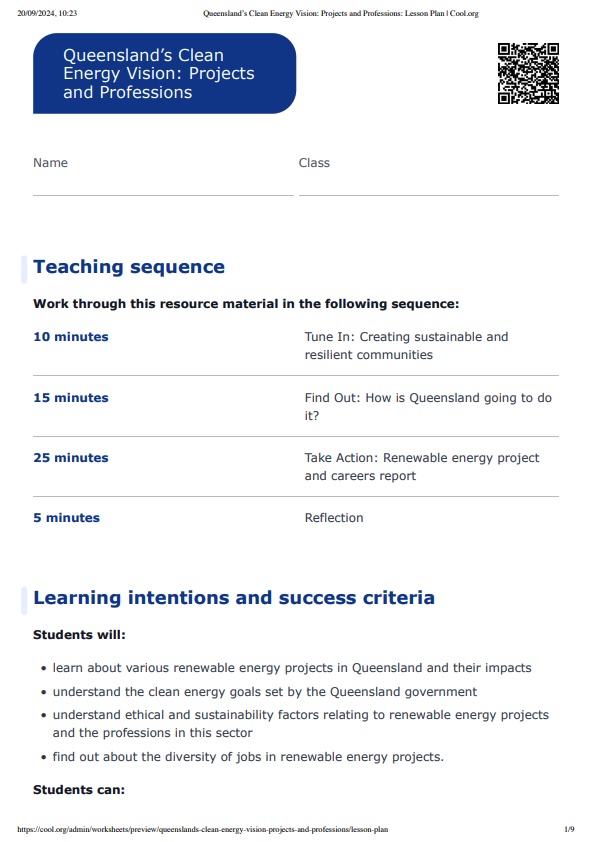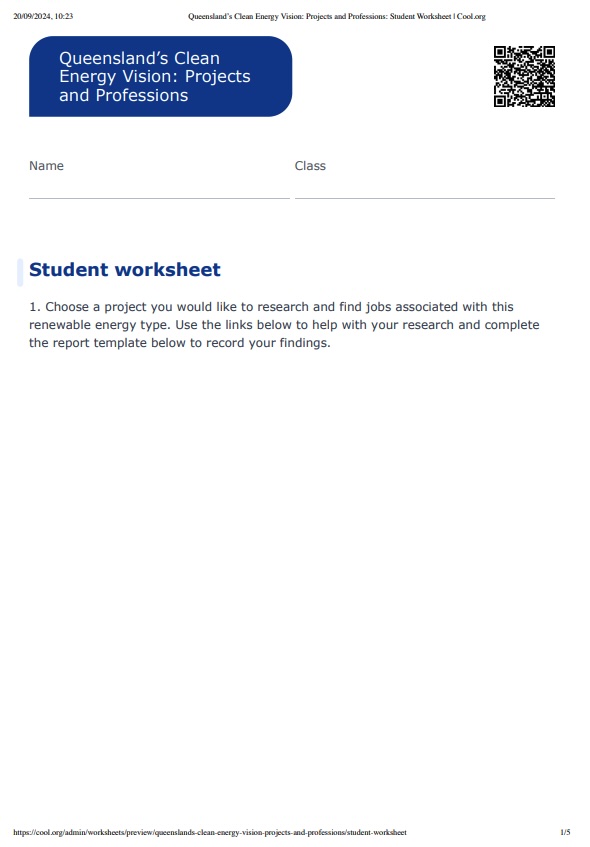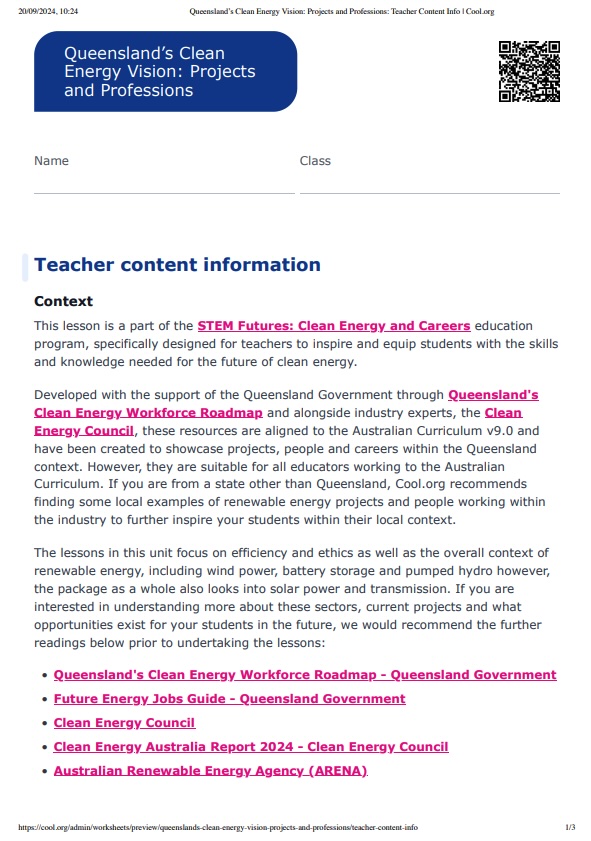Lesson summary
Students will learn about renewable energy projects in Queensland and how they will contribute to the state’s clean energy goals. They will further explore ethical and sustainability factors relating to the design, planning, construction, running and maintenance of renewable energy projects. Students will select a renewable energy project to investigate and report their findings about the impacts, ethical and sustainability considerations and responsibilities, and some of the job opportunities that exist in this sector.
Learning intentions:
Students will...
- explore various renewable energy projects in Queensland, and their impacts
- understand the clean energy goals set by the Queensland government
- understand ethical and sustainability factors relating to renewable energy projects and the professions in this sector
- find out about the diversity of jobs in renewable energy projects.
Success criteria:
Students can...
- outline some of the different renewable energy projects in Queensland
- describe some of the impacts of renewable energy projects in Queensland
- identify ethical and sustainability factors that are considered a part of renewable energy projects
- report on some of the job opportunities that exist in the renewable energy sector of Queensland.
Lesson guides and printables
Curriculum links
Select your curriculum from the options below.
Lesson details
Skills
This lesson is designed to build students’ competencies in the following skills:
- communication
- curiosity
- digital literacy
- reflection
Curriculum Mapping
Australian Curriculum (v9.0) content description: Year 9 Design and Technologies
Students learn to:
- analyse how people in design and technologies occupations consider ethical, security and sustainability factors to innovate and improve products, services and environments (AC9TDE10K01)
- analyse the impact of innovation, enterprise and emerging technologies on designed solutions for global preferred futures (AC9TDE10K02).
Relevant parts of Year 9 achievement standards: Students can explain how people consider factors that impact on design decisions and the technologies used to design and produce products, services and environments for sustainable living. They explain the contribution of innovation, enterprise skills and emerging technologies to global preferred futures. For one or more of the technologies contexts, students explain the features of technologies and their appropriateness for purpose, and create designed solutions based on an analysis of needs or opportunities.
NSW Syllabus outcomes:
Stage 5 Design and Technology
- analyses the work and responsibilities of designers and the factors affecting their work (DT5-4)
- evaluates designed solutions that consider preferred futures, the principles of appropriate technology, and ethical and responsible design (DT5-5)
General capabilities: Ethical Understanding, Intercultural Understanding, Personal and Social Capability
Cross-curriculum priority: Sustainability
Level of teacher scaffolding: Low/Medium: facilitate discussions and group work.
UN Sustainable Development Goals
- Target 9.1: Develop quality, reliable, sustainable and resilient infrastructure, including regional and transborder infrastructure, to support economic development and human well-being, with a focus on affordable and equitable access for all.
Resources Required
- Device capable of displaying audiovisual material
- Student devices for individual research
- Student Worksheet
- Whiteboard and whiteboard markers
Additional Info
This lesson has been developed in partnership with the Queensland Government through Queensland's Clean Energy Workforce Roadmap. Cool.org would like to acknowledge and express our gratitude to the Clean Energy Council for the expertise and advice provided in creating these resources.
Related Professional Learning
STEM Professional Learning Pathway
Quick summary: Enhance your practice with Cool.org's STEM Professional Learning Pathway. This year-long plan is designed to build your skills and capabilities in teaching STEM, ultimately transforming you into a STEM Innovator. The pathway will prepare you to integrate STEM education effectively, adapt to technological advancements and inspire students to succeed in a rapidly evolving world.




Welcome back!
Don't have an account yet?
Log in with:
Create your free Cool.org account.
Many of our resources are free, with an option to upgrade to Cool+ for premium content.
Already have an account?
Sign up with:
By signing up you accept Cool.org's Terms and Conditions(Opens in new tab) and Privacy Policy(Opens in new tab).